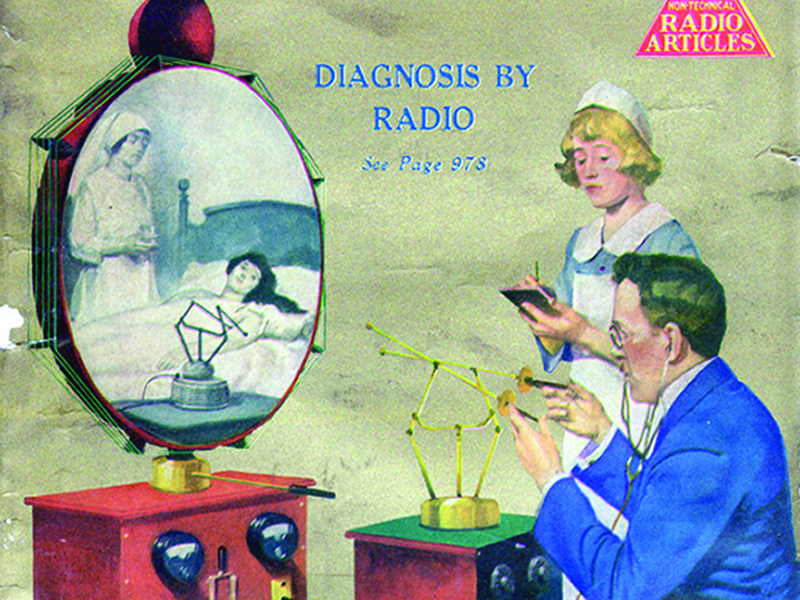Financial pressures and a seismic shift in GP attitudes could drive fundamental changes in patient consults
Financial pressures and a seismic shift in GP attitudes could drive fundamental changes in patient consults
GPs overwhelmingly support the use of technology-based consults, as long as safety protocols are in place, but they aren’t being facilitated by their practice or the government to do it, according to a survey conducted by The Medical Republic and Wax Interactive into changing attitudes of GPs to telehealth.
Of the nearly 100 GPs who responded to the online survey, more than half wanted the ability to charge for a teleconsult, but didn’t have it, either because the technology wasn’t available in their surgery, or their surgery had protocols preventing doctors from undertaking formal teleconsults.
This is despite more than 65% of the respondents saying they had conducted at least one teleconsult in the previous week, if you count email and phone consults.
According to the Medical Board of Australia, technology based patient consults are consults that use any form of technology as an alternative to face-to-face consults.
Nearly 80% of respondents said they were interested in consulting via live video links, and 83% of respondents said they wanted the ability to charge patients for such consultations. Thirty nine per cent of survey respondents were owners/partners (39.2%), 30.9% were full-time non-principal GPs, and 29.9% part-time non-principals.
Participation bias also has to be taken into account, with those more interested in telehealth being more likely to respond to the survey.
Even so, the results of the survey suggest a very strong desire to adopt new technology in consults.
Key reasons cited for wanting to conduct and charge for telehealth consults included:
• Increased reach and frequency of care for patients, especially in rural areas
• Reduced patient burden of travel and time
• Convenience and cost, to the patient, the doctor and the healthcare system
• Reduced practice operating costs
• Additional income
So why haven’t many practices adopted paid teleconsultations?
The answer likely lies at least partly in the speedy shift in GPs’ perceptions around technology and patient demand, versus the ability of practice owners to keep up with this change.
Another potential barrier, especially in disadvantaged areas, has been the lack of Medicare funding for non face-to-face consults.
A recent survey conducted by medical software company, MedicalDirector, found the last year had seen the most significant shift in GP attitudes towards technology in more than a decade. Those technologies which had been controversial, in large part because of security issues, like cloud-based computing, have seen a major shift towards acceptance.
According to MedicalDirector CEO Phil Offer, the shift has been “seismic”. He says that offerings around consumer services such as banking and travel on our mobile devices are sinking in and doctors are starting to become a lot more comfortable with it.
In the same MedicalDirector survey, telemedicine ranked as the second highest technology GPs felt would improve patient outcomes and the area of technology in which acceptance had grown the most in the last year.
A likely driver for some of this change is the increasing pressure on general practices to generate additional income.
“We do a lot of unpaid work, often helping over the phone or email, which frankly is getting harder and harder to do given the rebate freeze. The ability to charge simply for a teleconsult, given all the correct protocols are in place, would be very useful,” one GP told The Medical Republic.
Studies conducted by BEACH estimate that GPs do between 2.5 and 10 hours of unpaid work per week. If technology can convert some of this into remuneration, and provide tangible benefits to their patients, many GPs would welcome the arrival of such technology.
Some practices around the country have had the ability to do teleconsults and charge for them for a long time. Systems that offer telehealth capability, and other key services such as online bookings, include Ozdocsonline.com.au and Docappointments (out of Tasmania).
But as a percentage of the whole, these practices are still few and far between. Most practices, particularly those in high bulk billing areas, haven’t had the money, incentive or time to make telehealth consults work easily for them. But newer, cheaper systems are removing one of these obstacles.
Another interesting element in the telehealth story is the question of what will happen to the recently established centralised providers, especially Telstra’s ReadyCare. Will widespread adoption of telehealth by individual practices spell the end of centralised services like this, and the many small start-ups in the space? Or will they add to the rapidly expanding mix?


